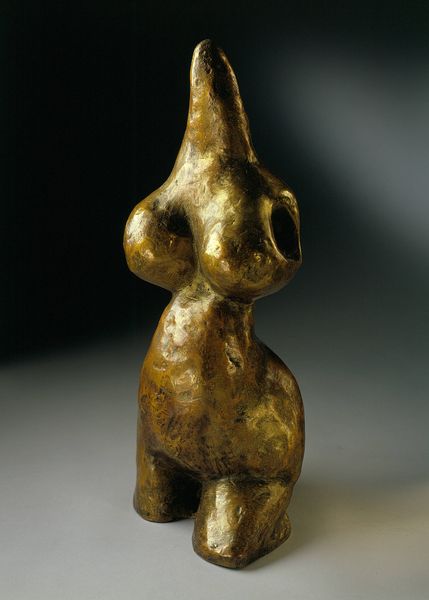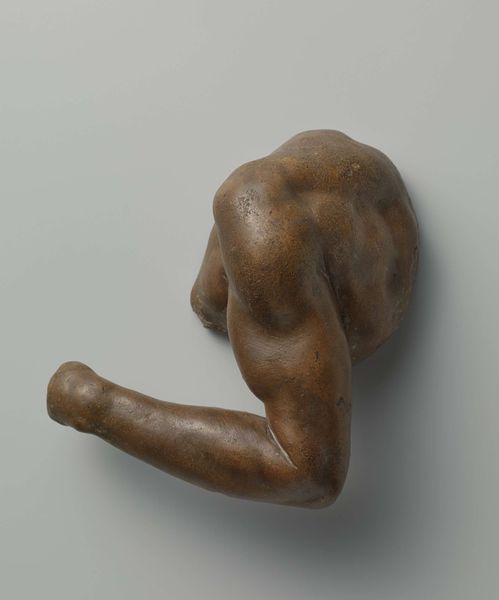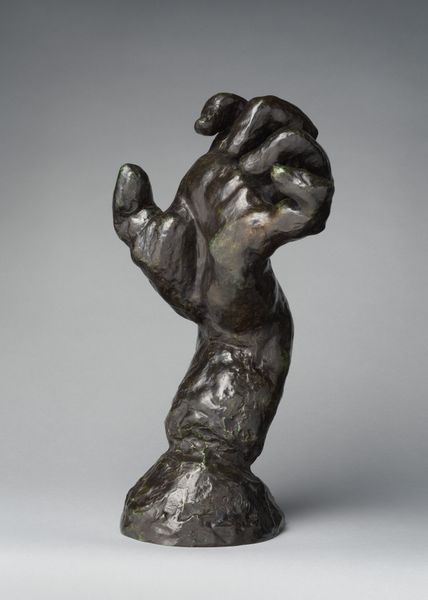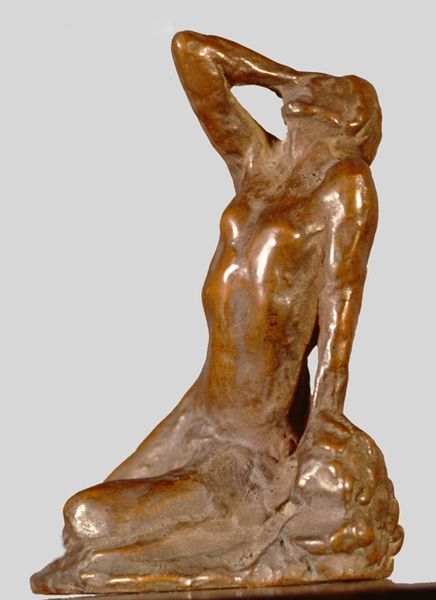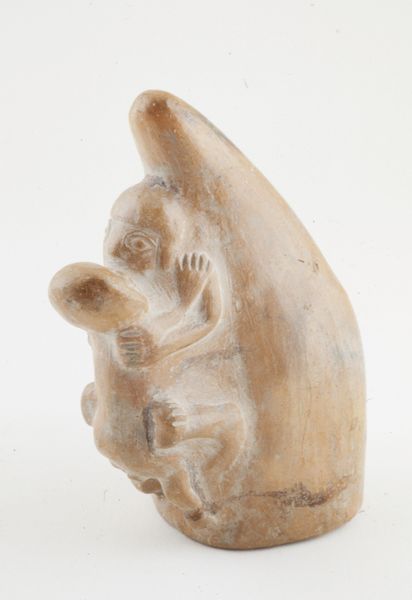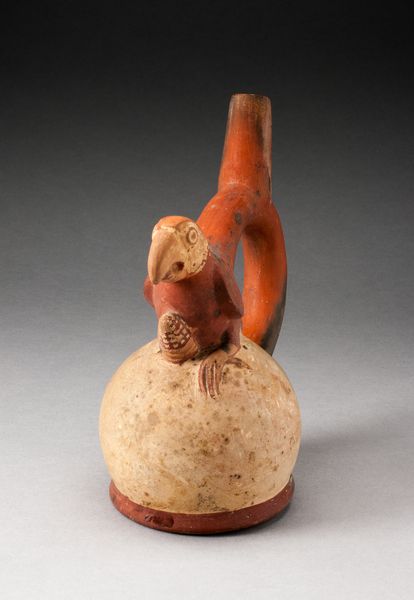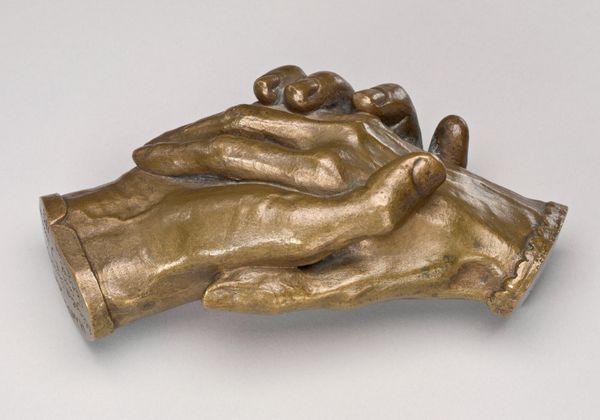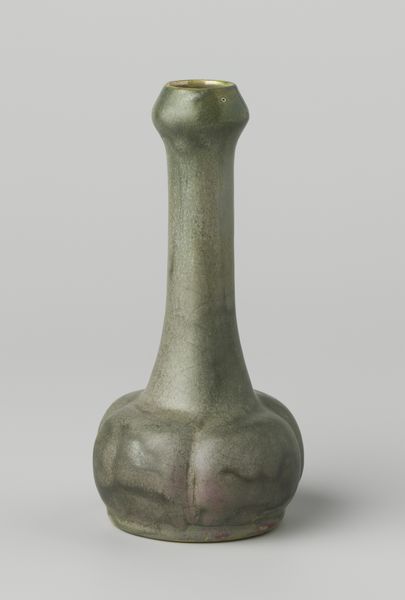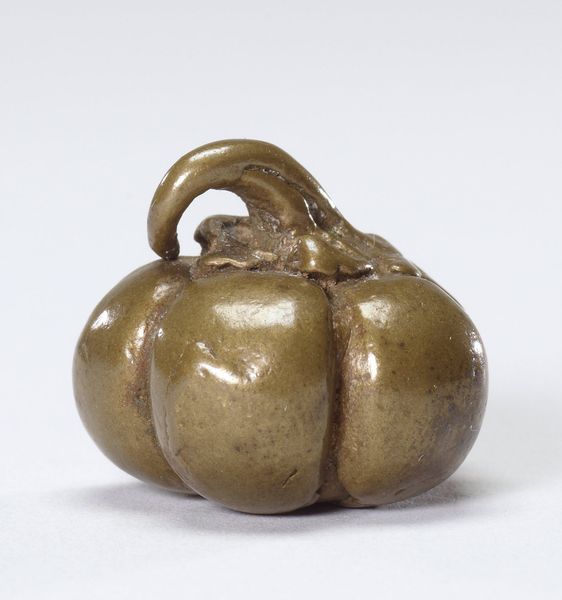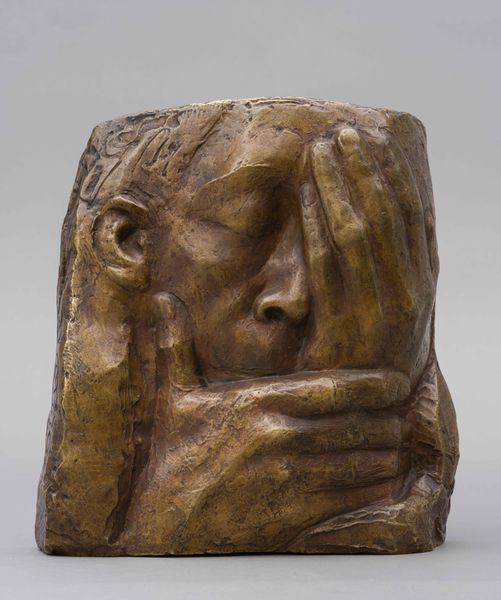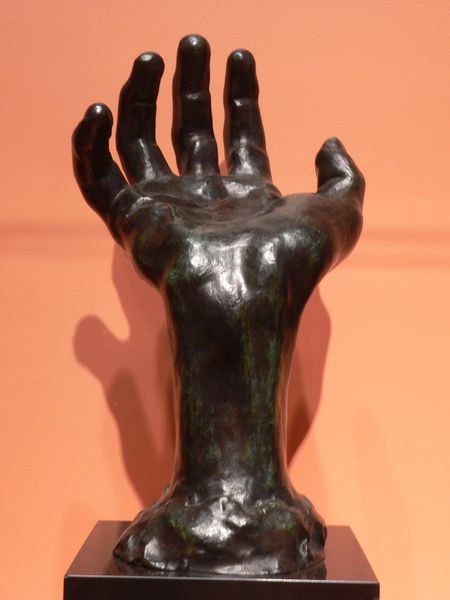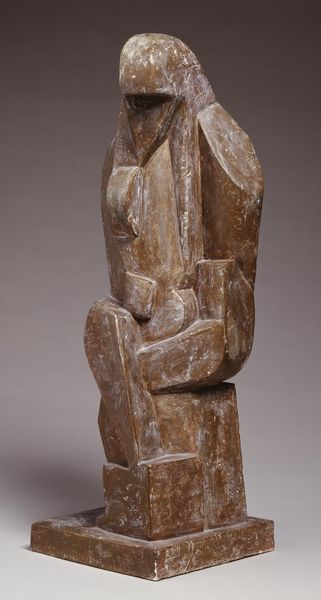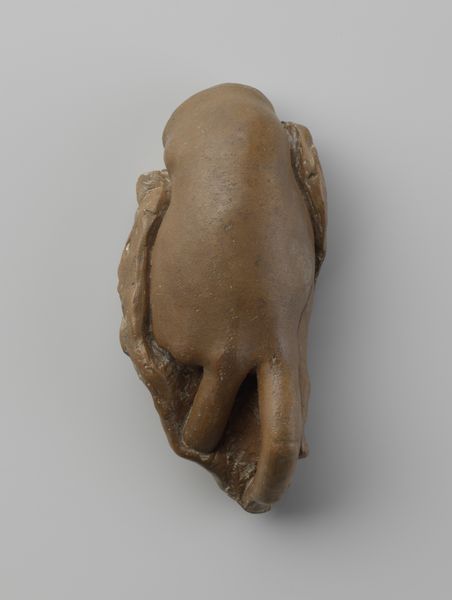
bronze, sculpture
#
abstract-expressionism
#
bronze
#
figuration
#
sculpture
#
ceramic
Copyright: Louise Bourgeois,Fair Use
Curator: What strikes you first about Louise Bourgeois' "Fragile Goddess" from 1970? It's cast in bronze, giving it a timeless feel. Editor: There's an incredible tension between weight and vulnerability, isn't there? The bronze suggests permanence, almost an archaic feel, yet the forms themselves seem soft, yielding. Curator: Exactly. I think that’s central to Bourgeois' exploration of femininity and the maternal experience. Consider how bronze traditionally conveys power – here, that association is subverted to represent a more complex interiority. The female form, so often idealized, is instead presented with raw emotion and psychological depth. The Abstract Expressionist style lends to a sense of internal emotion, translated outwardly through abstraction. Editor: Absolutely. The vertical element at the top evokes both a phallic symbol and perhaps a stylized horn or crown. Given Bourgeois' life and work, wouldn't that suggest a reclamation of power by the female form, almost pushing against patriarchal interpretations and reclaiming ancient matriarchal symbology? Curator: Precisely! Bourgeois frequently dealt with themes of trauma and repression. We could analyze how "Fragile Goddess" engages with feminist discourses, challenging traditional power dynamics and exploring the intricacies of female identity through a symbolic language of forms and textures. We can examine this work within the framework of 1970s feminist art movements. Editor: The bronze patina is gorgeous, like something unearthed from the earth. It carries the patina of age and memory – not a goddess of classical perfection, but one scarred by experience and history, bearing silent witness. The rough texture almost begs to be touched, conveying a visceral immediacy. It prompts reflection on the goddesses from matriarchal, pre-patriarchal religions. Curator: It is a deeply evocative piece. Understanding its place within art history and the feminist movement certainly enhances our understanding, doesn't it? Editor: Definitely, it's an intersection of powerful emotions, cleverly embedded in symbols that have spanned history, challenging viewers to confront enduring questions of power, vulnerability, and identity.
Comments
No comments
Be the first to comment and join the conversation on the ultimate creative platform.
